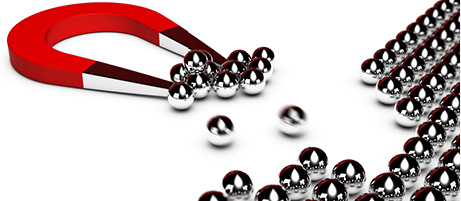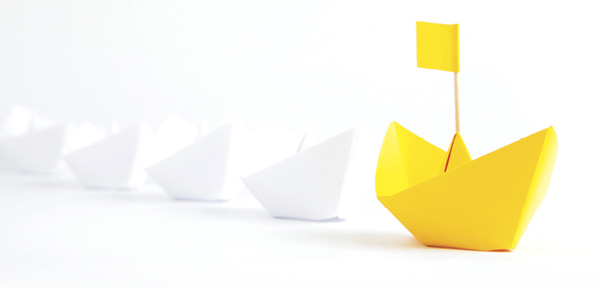5 Ways to Be More Innovative

By Susan Robertson
When you really need new ideas, fresh thinking, or a creative solution to a challenge, a typical day-to-day approach in your thinking is not the optimal process. Using the same old thinking simply leads to old ideas or ones you’ve tried before. Instead, you need something that stimulates your brain in diverse ways and shifts your perspective on the issues.
Here are five ways to shake up your thinking and arrive at the fresh ideas you need.
1. Change your environment. Get outside your own conference room or office. Debrief the latest research results or industry report in an art museum. Or take your team to the zoo with the objective of coming back with new ideas. Depending on what part of the country you’re in, you could send your teams to the Mall of America, Walt Disney World, or a trendy area of Manhattan to look for inspiration and new ideas.
If you can’t physically get out of the office, find a way to get out metaphorically. Ask people to imagine how they would solve the problem-at-hand if they lived in Antarctica, or if viewed from the perspective of a submarine captain.
2. Bring in outsiders. Overtly invite other perspectives into your discovery and idea-generation processes. For example, for a project on new packaging and product ideas for a beverage company, invite a boat designer, a rainwater management expert, a sculptor, and a water-park designer (among others). Your project team will be amazed at the range and diversity of ideas that come when they are exposed to new perspectives on their challenge. They’ll think of ideas they’ll agree they never would have arrived at on their own due to their own embedded assumptions about the topic.
3. Truly engage with your customers. Don’t rely solely on second-hand data to understand your customers’ needs. You need to actually talk to them. Go to their homes or offices to see the problems they need solutions for.
All too often teams looking for an idea-generation project say, “We don’t need to do any discovery in advance because we already have ‘lots of data.’” This should make you wary, because it usually means they have numerous reports and reams of statistics about customers. Unfortunately, it rarely means they have discovered any real new insight into customer needs.
If you’re expecting your team to understand the customer by reading a deck or attending a PowerPoint presentation, challenge yourself to find a more engaging and interactive process. It will be far more effective to immerse your team in real customer understanding.
4. Question everything. Conduct exercises that force people to confront and challenge their subconscious assumptions about the topic. An easy way to do this is to ask for ideas that the team thinks would solve the problem but that they couldn’t implement for some reason. Then ask them to reframe each idea by saying, “We might be able to implement this idea if . . .” What comes behind the “if’s” helps surface assumptions that might actually be barriers. Of course, some barriers turn out to be real, but don’t spend much time on those ideas. In every case where I’ve ever done this with client teams, they also discover supposed barriers they could actually solve.
5. Let some crazy into the room. The academic definition of creative thinking is “the process of coming up with new and useful ideas.” The only way to get new ideas is to start with seemingly crazy ones. Every truly innovative idea seems a little crazy at first. If you only start with ideas that are comfortable or clearly easy to implement, they’re probably not very new.
Encourage people to throw in extremely wild ideas. Then play a game called If We Could. Instruct the team to temporarily let go of the problems in the idea. Ask them, “If we could implement this idea, what would be the benefits?” Once you have identified the benefits of each crazy idea, select the most promising few, and ask the team to look for possible solutions to the barriers.
Here’s how it could work. A team was on the verge of killing a truly original idea for a new kids’ cereal because they didn’t know how to create a critical component. However, after playing If We Could, they agreed that the idea was so interesting and unique they needed to explore it. The R&D team made a few calls to other experts, and within a few weeks, they had solved it. The idea resulted in the most successful new product launch in the brand’s history!
It is all too easy to simply approach every new challenge using our typical day-to-day thinking. It feels familiar, it’s easy to access that type of thinking, and it works on most daily challenges. So you subconsciously assume it works for any challenge. But it’s incredibly helpful to do some meta-analysis and think about how you’re thinking. Not every problem will benefit from the same type of thinking. Once you recognize that new situations need new thinking, it’s fairly easy to shift to a more productive mode for these challenges. Then shift back to the more familiar day-to-day thinking for your daily tasks.
Susan Robertson is a creative-thinking expert with over 20 years speaking and coaching in Fortune 500 companies. As an instructor on applied creativity at Harvard, Susan brings a scientific foundation to enhancing human creativity. For more information, visit https://susanrobertson.com/.







